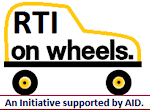SCC Online: New Delhi: Tuesday, 12Th August
2025.
Since 2005, the Right to Information Act (RTI Act) in India has served as a guiding light for our democratic nation that enabled its people to break the formerly impenetrable barriers of official transparency. However, a new amendment in the Digital Personal Data Protection Act, 2023 (DPDP Act), proposed under Section 44(3), poses a danger to this transparency. The DPDP Act has the potential to upside the delicate balance between the rights to information and privacy by significantly changing Section 8(1)(j) of the RTI Act.
The “larger public interest” as the safeguard:
The original text of Section 8(1)(j) of the RTI Act provided a crucial exemption:
8.(1)(j) Exemption from disclosure of information. information which relates to personal information, the disclosure of which has no relationship to any public activity or interest, or which would cause unwarranted invasion of the privacy of the individual unless the Central Public Information Officer or the State Public Information Officer or the appellate authority, as the case may be, is satisfied that the larger public interest justifies the disclosure of such information:
Provided that the information which cannot be denied to the Parliament or a State Legislature shall not be denied to any person.
This final provision, which can be referred to as the “larger public interest”, overrides an essential safety measure. It recognised that although individual privacy is inviolable, there are some cases in which the public’s right to know really outweighs a person’s privacy rights, especially when it comes to public employees and government operations. This clause requires a diligent and meticulous case-by-case analysis to ensure the guarantee of the release of the relevant data, which is essential for combating corruption, promoting sound governance, and holding public officials responsible.
However, this well-balanced legislation has been superseded by a relatively straightforward exception under Section 44(3)(j) of the DPDP Act: information which relates to personal information. By removing the “larger public interest”, this legislative reform essentially creates a near-complete exemption for any “personal information” from disclosure under the RTI Act, regardless of its relevance to public activities or its importance to public accountability.
Pre-DPDP Act judicial precedents:
Indian courts and Public Information Commissions had carefully navigated Section 8(1)(j) before this amendment, constantly seeking to harmonise transparency with privacy concerns.
Girish Ramchandra Deshpande v. Central Information Commission, maintained an option for disclosure if a “larger public interest” could be proven, even if it confirmed that a public servant’s data, including assets, income, and service records, was usually excluded. This landmark ruling emphasised how important the public interest test is.
Privacy was then unquestionably established as a fundamental right under Article 216 of the Constitution by the historic K.S. Puttaswamy (Privacy-9J.) v. Union of India case. Significantly, this decision did not support a complete ban on the sharing of personal data. Instead, it emphasised that, like all fundamental rights, privacy is not unrestricted and can still be subject to reasonable limitations if those limitations meet the severe requirements of necessity, proportionality, legality, and legitimate intent. With its inherent public interest overriding, many legal academics argue that the original Section 8(1)(j) was a proportional provision that was entirely in line with the Puttaswamy principles. The modification to the DPDP Act that removes this proportionality threshold for personal data goes against the prudent strategy advocated by the Puttaswamy ruling.
Information on carrying out public tasks by public personnel, even if it is fundamentally personal, may be disclosed if it really serves a larger public interest, according to the law that preceded the DPDP Act. This long-standing legal interpretation is categorically overturned by the new legislation, which marks a significant move towards more governmental transparency.
The ominous shadow of increased information denial
This alteration has wide-ranging and extremely unsettling practical effects:
(i) It is concerning that public monitoring of servants is eroding. Under the broad definition of “personal information”, it is now possible to systematically withhold information on public personnel assets, qualifications, disciplinary proceedings, attendance, performance appraisals, and transfer details all of which were previously subject to the discriminating public interest test. This essentially creates an impenetrable wall around public servants, making it very difficult to examine their behaviour and stop corruption.
(ii) It is common to deny requests for information that is in proximity to personal data, such as company details, in a public project, people who are getting governmental scheme benefits or exact roles played by the individuals. This shift will surely weaken public oversight in India, where the Government’s accountability is hard to witness.
(iii) In India, the Government’s accountability is frequently out of reach; this change significantly curbs citizens’ essential ability to be a watchdog because the principal method for disclosing them through the RTI Act has been seriously hampered. Various cases, related to false credentials, fake caste certificates, illegal asset accumulation, or unreported conflicts of interest by public officials may now continue to be hidden.
Consequential challenges for public interest litigation and investigative journalism
The repercussions of this amendment directly reverberate through the foundational pillars of democratic oversight:
(i) Hindrance to public interest litigation (PIL): When the actions of specific public officials are at the core of the problem, PILs usually depend on information gleaned through RTI requests to reveal systematic corruption, environmental violations, or human rights abuses. The new clause will make it much more challenging to obtain the necessary proof, which might put a stop to significant public interest litigation (PILs) that are meant to support good governance.
(ii) Crippling investigative journalism: Investigative journalists consistently use the RTI Act as a vital tool to reveal wrongdoing in the government apparatus. They carefully compile data from many sources, and often, a key element of their investigations is personal information on public officials or others involved in public activities. Because of the broad exemption, journalists will be forced to rely more on anonymous sources, which might increase the risks for whistleblowers and make it much harder to verify information. This problem is made worse by the DPDP Act’s present absence of notable exclusions designed for journalistic reasons, in contrast to many other international data protection laws.
A global perspective: Public interest tests in foreign jurisdictions
A fundamental principle of freedom of information (FOI) legislation in democratic politics, the “public interest test” is a crucial tool for striking a balance between privacy and transparency. Many countries specifically include such a test, especially for exemptions about personal data:
(i) United Kingdom (Freedom of Information Act, 2000): Personal information is covered under Section 40 of the UK Freedom of Information Act, 200011. Even if the matter is considered personal data, it may still be published if the public interest in doing so clearly surpasses the public interest in keeping it private. This is known as a “qualified exemption”, which acknowledges privacy. This criterion is frequently used by the UK’s Information Commissioner’s Office (ICO), for example, when dealing with public officials’ actions when there is a strong public interest in accountability.
(ii) Canada (Access to Information Act)12: Similar exclusions for personal information are included in Canadian federal and provincial access-to-information legislation. Many, however, include clear clauses requiring disclosure in cases where a “compelling public interest” clearly exceeds any privacy violations. Certain provincial laws, for instance, require the head of a public body to provide personal information if the public benefit in doing so surpasses the private interest of the individual.
(iii) Australia (Freedom of Information Act, 1982): A similar structure governs Australia’s Freedom of Information Act, 198213, which includes exemptions for personal data that are often based on a “public interest test”. The competent authorities are required to strike a balance between elements that support disclosure (such as fostering accountability and enhancing public discourse) and those that work against disclosure (such as commercial prejudice and unjustified invasion of privacy). When the public interest is considered substantial, decisions tend to favour disclosure.
These countries mostly use a public interest balancing test or a proportionality test. The following are typical components of this analytical framework:
(i) Determining the public interest in disclosure: What concrete advantages would the public experience from knowing this information? (for instance, encouraging responsibility, exposing wrongdoing, and influencing policy discussions).
(ii) Determining the possible harm in disclosure: What unfavourable outcomes may result from making this information public? (for instance, excessive privacy invasion, harm to a business, or endangering someone’s safety).
(iii) Comparing conflicting interests: Is the public’s interest in disclosure greater than the possible risk? The information must be made public if the answer is yes. Importantly, the burden of proving public interest is sometimes placed on the public authority to defend the information’s concealment.
Conclusion: A troubling retreat from openness
The DPDP Act’s amend Section 8(1)(j) of the RTI Act marks an essential shift from the maximum disclosure and accountability tenets that have long served as the foundation for India’s transparency laws. Whether on purpose or accidentally, the legislators may have created a shield of opacity by eliminating the “larger public interest” override, which would seriously hinder the people’s natural right to examine the behaviour of public officials and governmental acts.
Although protecting people’s privacy is unquestionably crucial, the strategy now in use places an excessive amount of emphasis on privacy at the expenses of transparency, especially when it comes to public affairs. This emerging crack in its transparency framework is a danger to a dynamic democracy like India, which heavily depends on citizen awareness and informed public debate. It requires an immediate reassessment and possibly a legislative recalibration to make sure that the crucial balance between the rights to information and privacy is not only restored but also permitted to thrive in tandem rather than competing with strong public accountability.
Since 2005, the Right to Information Act (RTI Act) in India has served as a guiding light for our democratic nation that enabled its people to break the formerly impenetrable barriers of official transparency. However, a new amendment in the Digital Personal Data Protection Act, 2023 (DPDP Act), proposed under Section 44(3), poses a danger to this transparency. The DPDP Act has the potential to upside the delicate balance between the rights to information and privacy by significantly changing Section 8(1)(j) of the RTI Act.
The “larger public interest” as the safeguard:
The original text of Section 8(1)(j) of the RTI Act provided a crucial exemption:
8.(1)(j) Exemption from disclosure of information. information which relates to personal information, the disclosure of which has no relationship to any public activity or interest, or which would cause unwarranted invasion of the privacy of the individual unless the Central Public Information Officer or the State Public Information Officer or the appellate authority, as the case may be, is satisfied that the larger public interest justifies the disclosure of such information:
Provided that the information which cannot be denied to the Parliament or a State Legislature shall not be denied to any person.
This final provision, which can be referred to as the “larger public interest”, overrides an essential safety measure. It recognised that although individual privacy is inviolable, there are some cases in which the public’s right to know really outweighs a person’s privacy rights, especially when it comes to public employees and government operations. This clause requires a diligent and meticulous case-by-case analysis to ensure the guarantee of the release of the relevant data, which is essential for combating corruption, promoting sound governance, and holding public officials responsible.
However, this well-balanced legislation has been superseded by a relatively straightforward exception under Section 44(3)(j) of the DPDP Act: information which relates to personal information. By removing the “larger public interest”, this legislative reform essentially creates a near-complete exemption for any “personal information” from disclosure under the RTI Act, regardless of its relevance to public activities or its importance to public accountability.
Pre-DPDP Act judicial precedents:
Indian courts and Public Information Commissions had carefully navigated Section 8(1)(j) before this amendment, constantly seeking to harmonise transparency with privacy concerns.
Girish Ramchandra Deshpande v. Central Information Commission, maintained an option for disclosure if a “larger public interest” could be proven, even if it confirmed that a public servant’s data, including assets, income, and service records, was usually excluded. This landmark ruling emphasised how important the public interest test is.
Privacy was then unquestionably established as a fundamental right under Article 216 of the Constitution by the historic K.S. Puttaswamy (Privacy-9J.) v. Union of India case. Significantly, this decision did not support a complete ban on the sharing of personal data. Instead, it emphasised that, like all fundamental rights, privacy is not unrestricted and can still be subject to reasonable limitations if those limitations meet the severe requirements of necessity, proportionality, legality, and legitimate intent. With its inherent public interest overriding, many legal academics argue that the original Section 8(1)(j) was a proportional provision that was entirely in line with the Puttaswamy principles. The modification to the DPDP Act that removes this proportionality threshold for personal data goes against the prudent strategy advocated by the Puttaswamy ruling.
Information on carrying out public tasks by public personnel, even if it is fundamentally personal, may be disclosed if it really serves a larger public interest, according to the law that preceded the DPDP Act. This long-standing legal interpretation is categorically overturned by the new legislation, which marks a significant move towards more governmental transparency.
The ominous shadow of increased information denial
This alteration has wide-ranging and extremely unsettling practical effects:
(i) It is concerning that public monitoring of servants is eroding. Under the broad definition of “personal information”, it is now possible to systematically withhold information on public personnel assets, qualifications, disciplinary proceedings, attendance, performance appraisals, and transfer details all of which were previously subject to the discriminating public interest test. This essentially creates an impenetrable wall around public servants, making it very difficult to examine their behaviour and stop corruption.
(ii) It is common to deny requests for information that is in proximity to personal data, such as company details, in a public project, people who are getting governmental scheme benefits or exact roles played by the individuals. This shift will surely weaken public oversight in India, where the Government’s accountability is hard to witness.
(iii) In India, the Government’s accountability is frequently out of reach; this change significantly curbs citizens’ essential ability to be a watchdog because the principal method for disclosing them through the RTI Act has been seriously hampered. Various cases, related to false credentials, fake caste certificates, illegal asset accumulation, or unreported conflicts of interest by public officials may now continue to be hidden.
Consequential challenges for public interest litigation and investigative journalism
The repercussions of this amendment directly reverberate through the foundational pillars of democratic oversight:
(i) Hindrance to public interest litigation (PIL): When the actions of specific public officials are at the core of the problem, PILs usually depend on information gleaned through RTI requests to reveal systematic corruption, environmental violations, or human rights abuses. The new clause will make it much more challenging to obtain the necessary proof, which might put a stop to significant public interest litigation (PILs) that are meant to support good governance.
(ii) Crippling investigative journalism: Investigative journalists consistently use the RTI Act as a vital tool to reveal wrongdoing in the government apparatus. They carefully compile data from many sources, and often, a key element of their investigations is personal information on public officials or others involved in public activities. Because of the broad exemption, journalists will be forced to rely more on anonymous sources, which might increase the risks for whistleblowers and make it much harder to verify information. This problem is made worse by the DPDP Act’s present absence of notable exclusions designed for journalistic reasons, in contrast to many other international data protection laws.
A global perspective: Public interest tests in foreign jurisdictions
A fundamental principle of freedom of information (FOI) legislation in democratic politics, the “public interest test” is a crucial tool for striking a balance between privacy and transparency. Many countries specifically include such a test, especially for exemptions about personal data:
(i) United Kingdom (Freedom of Information Act, 2000): Personal information is covered under Section 40 of the UK Freedom of Information Act, 200011. Even if the matter is considered personal data, it may still be published if the public interest in doing so clearly surpasses the public interest in keeping it private. This is known as a “qualified exemption”, which acknowledges privacy. This criterion is frequently used by the UK’s Information Commissioner’s Office (ICO), for example, when dealing with public officials’ actions when there is a strong public interest in accountability.
(ii) Canada (Access to Information Act)12: Similar exclusions for personal information are included in Canadian federal and provincial access-to-information legislation. Many, however, include clear clauses requiring disclosure in cases where a “compelling public interest” clearly exceeds any privacy violations. Certain provincial laws, for instance, require the head of a public body to provide personal information if the public benefit in doing so surpasses the private interest of the individual.
(iii) Australia (Freedom of Information Act, 1982): A similar structure governs Australia’s Freedom of Information Act, 198213, which includes exemptions for personal data that are often based on a “public interest test”. The competent authorities are required to strike a balance between elements that support disclosure (such as fostering accountability and enhancing public discourse) and those that work against disclosure (such as commercial prejudice and unjustified invasion of privacy). When the public interest is considered substantial, decisions tend to favour disclosure.
These countries mostly use a public interest balancing test or a proportionality test. The following are typical components of this analytical framework:
(i) Determining the public interest in disclosure: What concrete advantages would the public experience from knowing this information? (for instance, encouraging responsibility, exposing wrongdoing, and influencing policy discussions).
(ii) Determining the possible harm in disclosure: What unfavourable outcomes may result from making this information public? (for instance, excessive privacy invasion, harm to a business, or endangering someone’s safety).
(iii) Comparing conflicting interests: Is the public’s interest in disclosure greater than the possible risk? The information must be made public if the answer is yes. Importantly, the burden of proving public interest is sometimes placed on the public authority to defend the information’s concealment.
Conclusion: A troubling retreat from openness
The DPDP Act’s amend Section 8(1)(j) of the RTI Act marks an essential shift from the maximum disclosure and accountability tenets that have long served as the foundation for India’s transparency laws. Whether on purpose or accidentally, the legislators may have created a shield of opacity by eliminating the “larger public interest” override, which would seriously hinder the people’s natural right to examine the behaviour of public officials and governmental acts.
Although protecting people’s privacy is unquestionably crucial, the strategy now in use places an excessive amount of emphasis on privacy at the expenses of transparency, especially when it comes to public affairs. This emerging crack in its transparency framework is a danger to a dynamic democracy like India, which heavily depends on citizen awareness and informed public debate. It requires an immediate reassessment and possibly a legislative recalibration to make sure that the crucial balance between the rights to information and privacy is not only restored but also permitted to thrive in tandem rather than competing with strong public accountability.















































































